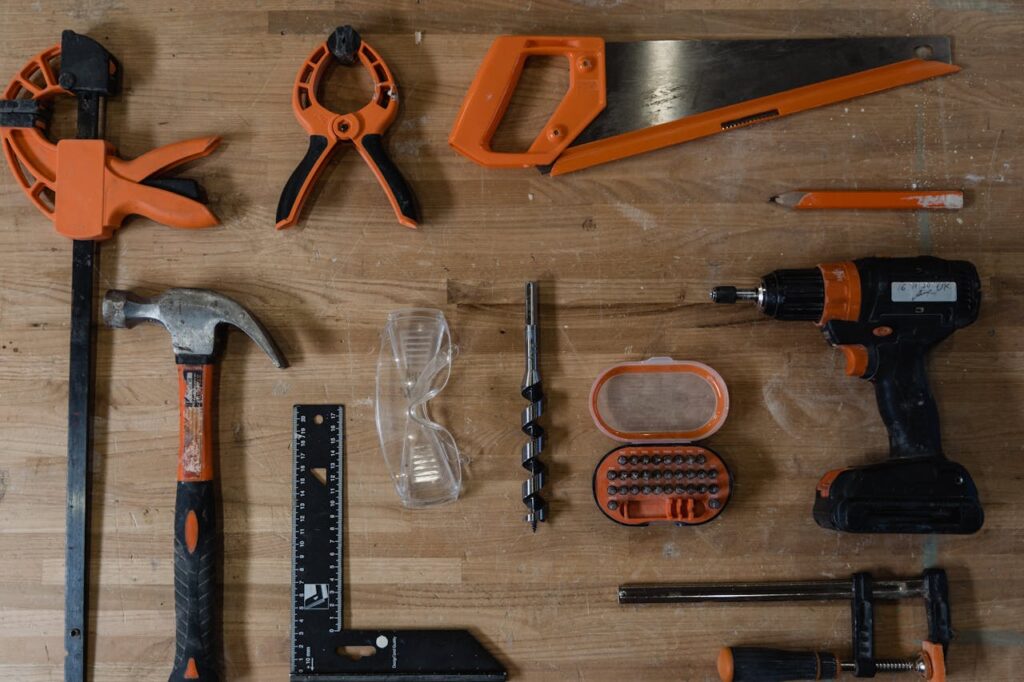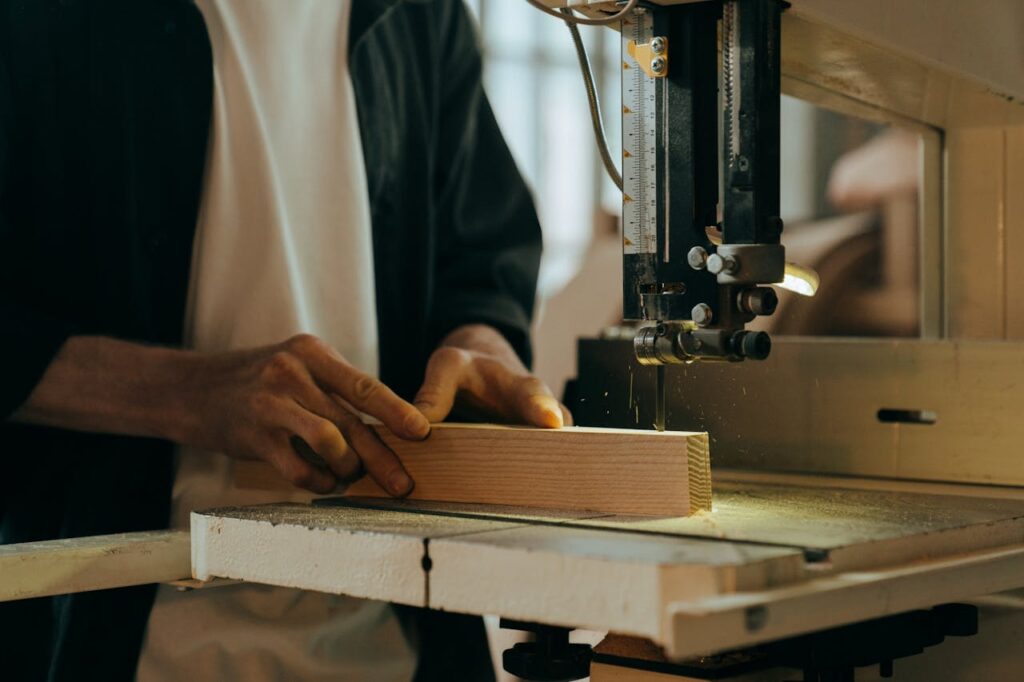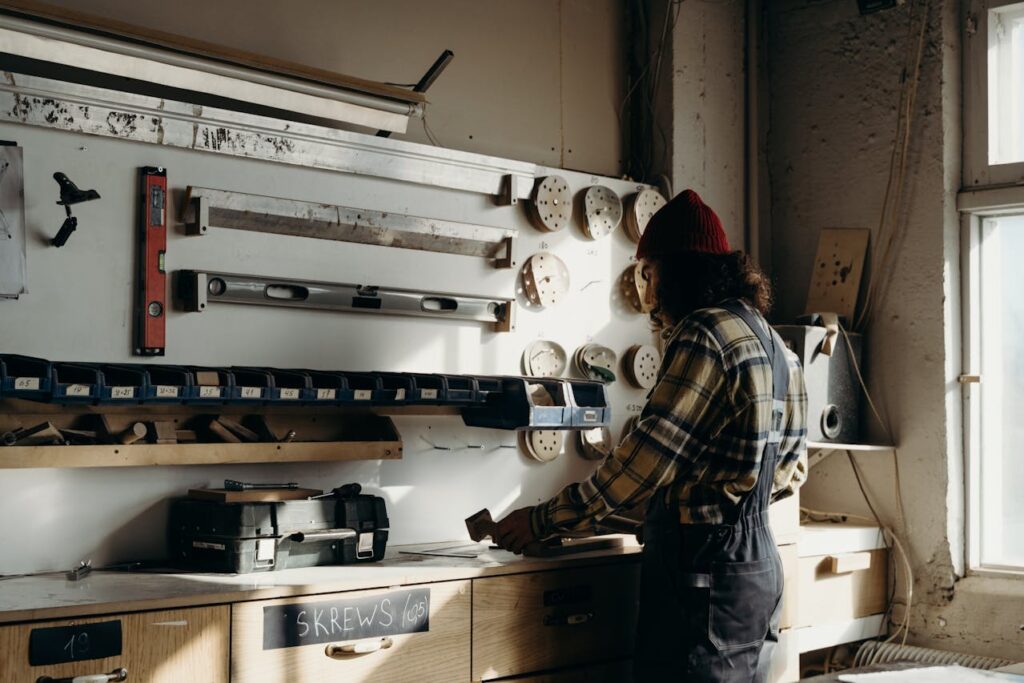Hand tools help us fix, build, and create many things every day. From screwdrivers to hammers, these tools are important helpers in our homes and workshops. But like anything we use a lot, hand tools need some care to keep working well. When we take good care of them, they last much longer and do their job better.
In this write up, we will share simple tips to maintain your hand tools. You will learn easy ways to clean, store, and protect them. These tips don’t take much time, but they make a big difference. Let’s make sure your tools stay strong and ready for your next project!
Key Takeaways
- Clean your tools after each use to remove dirt and grime.
- Keep tools dry to prevent rust and corrosion.
- Store tools properly in a dry, organized place.
- Sharpen cutting tools regularly for better performance.
- Inspect handles and parts for damage and fix problems early.
Different Hand Tool Types and Materials
Hand tools come in many shapes and sizes. Each tool has a specific job to do. Let’s look at some common types and what they are made of.
Types of Hand Tools
- Hammers: Used for pounding nails or breaking things. They have a heavy metal head and a handle you hold.
- Screwdrivers: Used to turn screws. They have a metal shaft and a handle, often made of plastic or rubber for grip.
- Pliers: Help you grip, twist, or cut wires and other small objects. They have metal jaws and handles.
- Wrenches: Used to tighten or loosen nuts and bolts. Made mostly of metal.
- Knives and Cutting Tools: Like utility knives or chisels, used for cutting or shaping materials.
Materials Hand Tools Are Made From
- Steel: Most tool heads are made of steel. Steel is strong and can handle hard work.
- Wood: Some handles are wooden. Wood feels comfortable but can get damaged if wet.
- Plastic or Rubber: Many modern tools have plastic or rubber handles. These give a better grip and protect your hand.
- Aluminum: Sometimes used for lighter tools or parts of tools. It’s lighter but not as strong as steel.
Knowing what your tool is made of helps you take care of it properly. For example, steel can rust, so it needs to stay dry. Wood can crack if it gets too dry or wet. Plastic handles might get sticky or crack over time.
Why Regular Maintenance Matters

Taking care of your hand tools regularly is very important. Maintenance means doing small jobs to keep tools working well. Here’s why it matters:
1. Tools Last Longer
If you clean and protect your tools, they don’t wear out as fast. For example, wiping off dirt and oil after using a wrench keeps it from getting rusty. Rust can make a tool weak or break it completely.
2. Tools Work Better
Well-maintained tools do their jobs easily. A screwdriver with a sharp tip fits screws better and won’t slip. A hammer with a smooth handle feels good in your hand and helps you hit nails more accurately.
3. Safety
Damaged tools can be dangerous. A cracked handle might break while you’re working. A dull blade can slip and cause accidents. Checking your tools often helps you spot problems before they cause harm.
4. Saves Money
Fixing tools early or keeping them clean means you don’t need to buy new ones all the time. This saves money and is better for the environment.
5. Ready When You Need Them
Imagine starting a project and finding your screwdriver is rusty or your hammer handle is loose. Regular maintenance means your tools are ready to go anytime.
15 Hand Tool Maintenance Tips to Make Them Last
Taking care of your hand tools helps them work better and last longer. With a little effort and attention, you can avoid common problems like rust, dull blades, and broken handles.
Below are 15 easy tips that will guide you in maintaining your tools properly. Follow these simple steps, and your tools will be ready whenever you need them!
1. Keep tools clean by wiping off dirt after each use.
After you finish working, always wipe off dirt, dust, and grease from your tools. Dirt can cause moving parts to stick or wear out faster. Using a dry cloth or even compressed air helps remove hard-to-reach grime.
This basic tool maintenance step keeps your tools working smoothly and ready for the next job. It also helps you spot signs of wear early.
- Use a dry cloth to remove dirt and dust after every use.
- Blow out dust from small crevices with compressed air if you have it.
- Wipe off grease or sticky substances with a mild soap solution, then dry.
- Check for stuck debris that could cause damage over time.
2. Apply a light coat of oil to metal parts to prevent rust.
Metal parts on hand tools can rust if left dry or wet. After cleaning, apply a thin layer of oil to all metal surfaces. This simple step protects your tools from moisture, especially if you live somewhere humid.
Remember, proper storage in a dry place also helps stop rust. Oil keeps your tools in good shape, just like with power tools that also need protection.
- Use a cloth to spread a thin layer of machine oil or light lubricant.
- Focus on blades, hinges, and any exposed metal surfaces.
- Wipe off excess oil to avoid attracting dirt.
- Repeat this after cleaning or if tools sit unused for a while.
3. Sharpen blades regularly to maintain cutting efficiency.

Tools with blades, like knives or chisels, need sharpening to work well. A sharp blade cuts cleanly and safely. If you wait too long, the blade becomes dull and harder to use. Sharpen your blades often using the right sharpening tools.
Keeping blades sharp is a key part of tool maintenance and helps your tools last longer and perform better.
- Use a sharpening stone or file designed for your tool’s blade.
- Follow the blade’s original angle for best results.
- Sharpen blades before they get very dull to avoid extra effort.
- Clean blades after sharpening to remove metal filings.
4. Store tools in a dry place to avoid moisture damage.
Where you keep your tools matters a lot. Proper storage means a dry, cool place away from water and humidity. Moisture causes rust and damages wooden handles. Good tool storage also keeps your tools organized and easy to find.
Avoid leaving tools outside or in damp basements to protect them from damage and wear.
- Choose a spot away from damp basements or outdoor areas.
- Use tool chests or pegboards that keep tools off the ground.
- Keep silica gel packs or moisture absorbers nearby if humidity is high.
- Avoid storing tools near water heaters or plumbing pipes.
5. Tighten loose screws and bolts before each use.
Before you start any project, check your tools for loose screws or bolts. Moving parts can become unsafe if they’re loose, causing tools to break or slip. Tightening them is a simple step that improves safety and tool performance.
Regularly inspecting your tools for signs of wear helps you fix problems early and keep your tools reliable.
- Inspect all screws, nuts, and bolts on your tools before starting work.
- Use the correct screwdriver or wrench to tighten them securely.
- Check moving parts like handles and joints carefully.
- Replace stripped screws or worn bolts promptly.
6. Use proper handles to avoid damage and ensure grip.
Using the proper tool handle helps you work safely and keeps the tool in good shape. A good handle gives you a strong grip and stops slipping during tool use. High-quality tools have handles designed for comfort and safety.
If a handle breaks or feels loose, replace it. This step is key for proper maintenance and the safe use of hand tools every time.
- Replace broken or cracked handles right away.
- Choose handles made of wood, plastic, or rubber for comfort and control.
- Avoid using tools with slippery or damaged grips.
- Ensure handles are firmly attached to tool heads.
7. Avoid dropping tools to prevent bending or breaking.
Dropping tools can cause serious damage to the tools and can make them unsafe to use. Even a small fall can bend metal parts or crack handles. Always store your tools carefully in tool chests or on racks.
Good maintenance of hand tools includes handling them gently to avoid damage and the need for repairs.
- Always carry tools securely, using tool belts or boxes.
- Store tools in a stable place where they won’t fall.
- Handle tools carefully, especially heavy or sharp ones.
- Inspect dropped tools for hidden damage before next use.
8. Clean wooden handles with linseed oil to prevent cracking.
Wooden handles need special care to stay strong and comfortable. After cleaning the tools, rub linseed oil on wooden handles. This keeps the wood from drying out and cracking. Proper maintenance and storage also help protect wooden parts.
Taking care of your tools this way makes them last longer and safer for lawn care or any project.
- Wipe handles clean before applying oil.
- Use boiled linseed oil for quicker drying.
- Apply a thin coat with a cloth and let it soak in.
- Repeat every few months or when wood looks dry.
9. Inspect tools for cracks or chips before using.

Before every use, check your tools carefully for cracks, chips, or other damage. Damaged tools can break while you work, causing injury. This is one of the most important safety precautions.
If you find any problems, fix or replace the tool before continuing. Regular inspection is a smart part of the care of hand tools.
- Look closely at handles and blades for any damage.
- Check moving parts for unusual looseness or stiffness.
- Avoid using tools with cracks that could cause accidents.
- Set aside damaged tools for repair or replacement.
10. Remove rust with steel wool or a wire brush promptly.
If you spot rust, clean the tools quickly using steel wool or a wire brush. Rust weakens metal and can cause damage to the tools. After removing rust, apply oil and store tools properly to stop rust from coming back.
Proper tool maintenance includes rust removal to keep tools strong and safe for years.
- Gently scrub rusty areas to prevent further corrosion.
- Use fine steel wool for light rust and a wire brush for heavier spots.
- After cleaning, wipe with oil to protect metal surfaces.
- Regularly check tools for early signs of rust.
11. Use the right tool for the job to avoid unnecessary wear.
Always choose the right tool for the job. Using the wrong tool can cause damage and wear out your tools faster. For example, don’t use pliers to hammer nails or a screwdriver as a chisel.
Proper hand tool care means picking tools made for the task. This tip helps maintain hand tools and keeps you safe during work.
- Match tools to their specific tasks (e.g., screwdriver for screws).
- Avoid forcing tools to do jobs they weren’t designed for.
- Using the right tool reduces damage and makes work easier.
- Keep specialized tools separate to stay organized.
12. Keep pliers’ pivot points lubricated for smooth action.
Pliers and other tools with moving parts require regular lubrication. Use a light oil or a proper lubricant on the pivot points to keep them moving smoothly. This simple step prevents rust and wear.
It’s a smart tip for maintenance of your hand tools that makes tool use easier and extends their life.
- Apply a drop of light oil to the joint regularly.
- Open and close the pliers a few times to spread the oil.
- Wipe off excess to avoid dirt buildup.
- Check pivots for rust or stiffness before using.
13. Avoid soaking tools in water to protect metal and wood.
Never soak your tools in water, even when cleaning. Water can cause rust on metal parts and make wooden handles swell or crack. Instead, use mild soap with a damp cloth and dry tools quickly.
Good hand tool care means protecting both metal and wood by drying tools after every use.
- Clean tools with a damp cloth rather than soaking them.
- Quickly dry tools after cleaning to prevent rust and swelling.
- Use mild soap if needed but rinse and dry carefully.
- Store tools dry to avoid moisture damage.
14. Label storage spots to quickly find and properly store tools.

Organize your tools with a clear tool storage system. Label storage spots or drawers so you can quickly find each tool and store it properly.
This helps avoid losing tools and reduces damage from improper storage. Organizing your tools is an easy tip and trick that improves tool storage of hand tools.
- Use clear labels or pictures on drawers and shelves.
- Arrange tools by type or size for easy access.
- Return tools to their spot after use to keep the system working.
- Labeling helps you organize your tools and speeds up projects.
15. Replace worn-out parts immediately to maintain tool function.
Worn-out parts can make tools unsafe or hard to use. If you notice handles cracking or blades dull, replace them right away.
Regular maintenance of your hand tools includes fixing or replacing parts to keep tools sharp and working well. This small effort saves you time and keeps your tools reliable.
- Swap out dull blades, cracked handles, or damaged grips right away.
- Use manufacturer-approved parts when possible for best fit.
- Check replacement parts during routine inspections.
- Keeping tools in top shape helps your work stay safe and effective.
Conclusion
Taking care of your hand tools is easier than you might think. By cleaning them after use, keeping them dry, and storing them properly, you can avoid rust and damage. Sharpening blades and checking handles for cracks also help your tools stay safe and effective.
Remember, good tool care saves money and makes your work easier. With a little attention, your hand tools will last for years and be ready whenever you need them. Now, go ahead and give your tools some love—they deserve it!
FAQs
1. How to properly maintain hand tools?
Properly maintain hand tools by cleaning and drying them after use, applying light oil to metal parts, sharpening blades, checking for damage, and storing tools properly in drawers or tool chests.
2. What are the three most important rules of tool maintenance?
The three key rules are to keep your tools clean, lubricate moving parts, and store the tools properly to avoid rust and damage.
3. What are the 4 methods of caring and maintaining cutting hand tools?
Cutting tools require regular sharpening, cleaning after use, applying oil to prevent rust, and proper storage in a dry place to maintain their condition.
4. How do you lubricate hand tools?
Use a light machine oil or lubricant on moving parts and metal surfaces. Apply with a cloth or dropper, then wipe off excess to keep tools protected and working smoothly.
5. Are your hand tools worn out and you want to purchase new high-quality tools?
Yes! When tools show cracks, rust, or dull blades beyond repair, it’s time to invest in new tools. Choose high-quality tools for better durability and safer use.
6. Can I use vinegar to prevent rust?
Vinegar can remove rust but isn’t ideal for long-term prevention. After cleaning with vinegar, rinse tools thoroughly, dry them well, and apply oil to preserve your tools.
7. What could I use to remove some surface blemishes and rust from tools like hammers and wrenches?
Use a wire brush or steel wool to scrub off surface rust and blemishes. Follow up by cleaning tools thoroughly and applying oil to prevent new rust.
8. How important are safety tips in tool maintenance?
Safety tips are crucial! Regular maintenance tasks like tightening screws, inspecting for damage, and cleaning tools reduce injury risks and keep tools in good condition.
9. How often should I clean and properly store my hand tools?
Make it a habit to clean and dry your tools after every use and store them properly in a tool cabinet or drawer to extend the life of your tools.
10. What types of tools require special care?
Bladed tools and striking tools require special care, including sharpening, oiling, and inspecting for cracks to keep them safe and effective.
11. How can I use compressed air in hand tool care?
Compressed air is used to clean dust and debris from tight spots, hinges, and moving parts, helping maintain tools in top condition.
12. Why is it important to store tools in drawers or tool chests?
Proper tool storage in drawers or tool chests protects tools from moisture and damage, organizes your space for your tools, and preserves their life.
13. How do I check tools for signs of wear?
Inspect tools for cracks, chips, loose parts, rust, or dull blades regularly. Catching signs of wear early helps maintain their condition and safety.
14. What maintenance tasks help preserve the longevity of your tools?
Regular cleaning, oiling, sharpening, tightening screws, and proper storage are essential maintenance tasks to keep tools working well longer.
15. How do I keep my striking tools safe and in good shape?
Inspect striking tools for handle damage or loose heads. Clean tools thoroughly after use and avoid dropping them to prevent damage to the tools.


